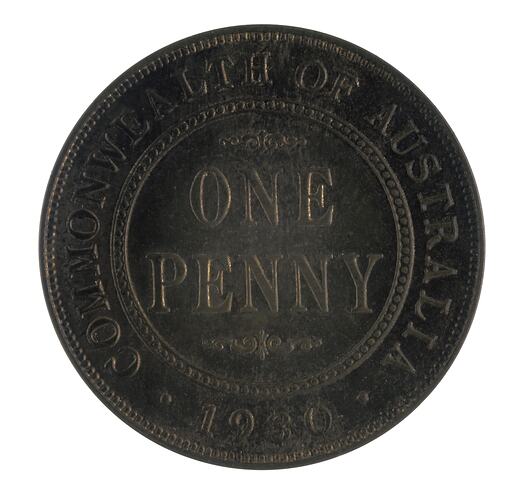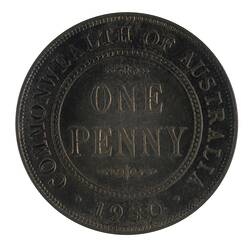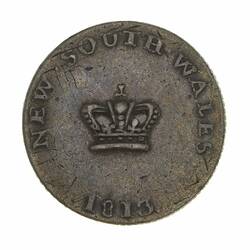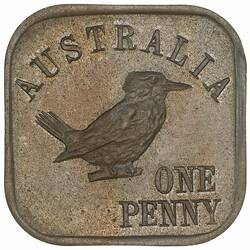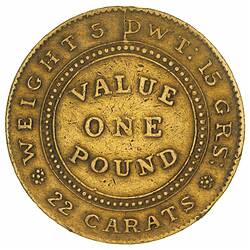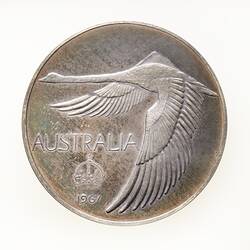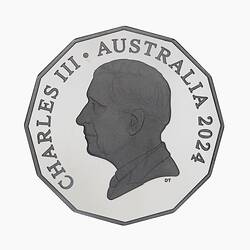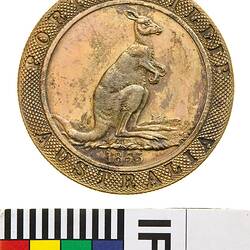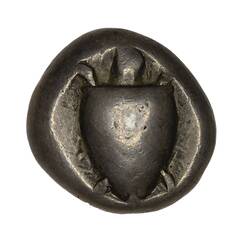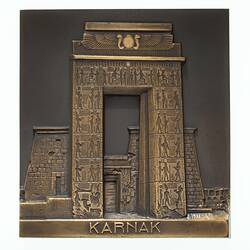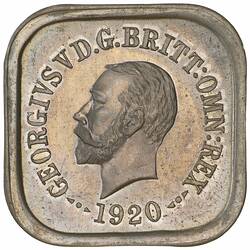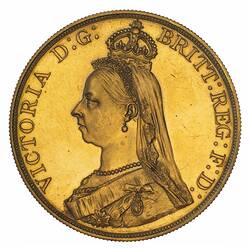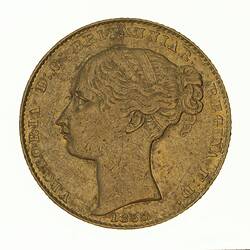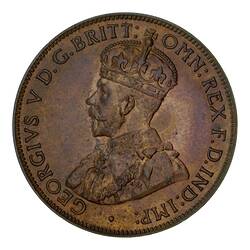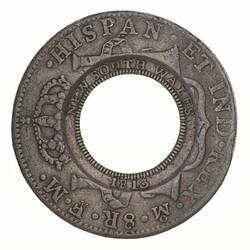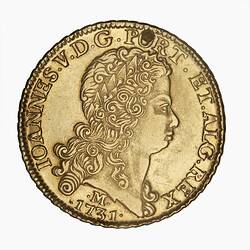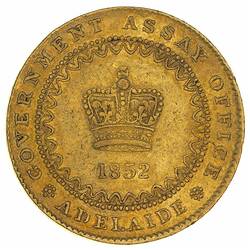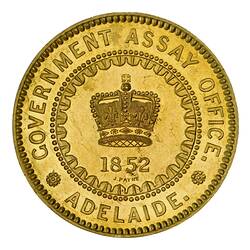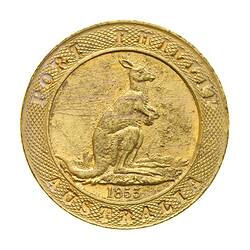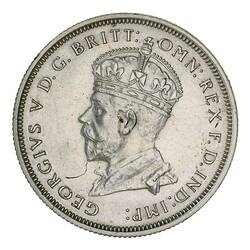Being on an island far away from their known world of Europe, Australia's early European colonists had to make do with the coins they brought with them. Occasionally they imported foreign coins to expand the circulation. Later, several runs of currency were made to fill gaps in the economy, or coins were not produced in great numbers. This has led to some unusual and special Australian coins that exist nowhere else.
Rare and Sought-after Coins
Many of Australia's rarest coins had a low mintage or were never intended for circulation. Australia's most famous coin, the 1930 penny, is the rarest coin in the country. No pennies were struck at the Melbourne Mint that year due to the onset of the Great Depression. Some 3000 test runs were made and released into circulation in 1931, including a high-quality proof version, of which there are only six known in the world (NU 5310).
Australia trialled several versions of a square penny in 1920 featuring the image of a kookaburra, but it never went into production. One version with a raised tail is virtually unknown outside of museum collections (NU 3072).
One of just three in existence, the five pound coin (NU 4645) was minted for presentation purposes by the Sydney Mint in 1887. It was never intended to be circulated as currency.
The 1855 gold sovereign was the first sovereign struck in Australia and the only one authorised by the Royal Mint in London to be differentiated by an alternate reverse design. It was minted with a wreath surrounding the word 'Australia' (NU 3170).
The 1923 halfpenny (NU 5358) was struck at the Melbourne Mint with a low mintage of 15,000, and as such is one of Australia's rarest circulating halfpenny coins.
Important Imports
When the three fleets of ships arrived in Australia from 1788, they brought a small amount of British currency with them. As the colony's economy grew the amount proved insufficient, and in 1812 Governor Macquarie imported 40,000 devalued Spanish coins (reales). He had a convict, William Henshall, who was a forger, rework them, over stamping each coin and punching the centre out to make two separate coins. In doing this, Henshall created a 'holey dollar' worth five shillings (NU 3256) and the 'dump', worth 15 pence (NU 3237).
Earlier, under a proclamation by Governor King in 1800, unworked foreign coins brought into the colony had their value fixed to control the small economy. The Brazilian solid gold 'Johanna' is an example - it was worth a substantial four pounds (NU 9614).
First Minted Coins
From 1825 British coins became Australia's recognised currency. However, there was no official mint in Australia until 1855. During this period various companies and government departments minted their own unofficial coinage.
The one shilling token produced by the Tasmanian sawmill owners Hugh McIntosh and Peter Degraves sometime after 1823 is Australia's first privately issued coin (NU 3000). It is also one of the earliest depictions of a kangaroo on a piece of European decorative art available for private ownership.
Made from gold brought to South Australia from the Victorian goldfields, the Adelaide Assay Office tokens were designed to guarantee their value. The Assay Office became the first, although unofficial, mint in Australia. The South Australian government wanted to keep the gold in the local economy instead of miners taking it away and potentially bankrupting the State (NU 33693). These tokens were unauthorised by the Royal Mint in London but by the time the letter of refusal returned to Adelaide, the Assay Office had opened, minted the tokens, solved the problem and then closed.
When the first one pound die cracked causing a vertical line at the edge of the coin (at the top, near the letter 'D') during minting, the Adelaide Assay Office, knowing they needed more currency in the State, issued it into circulation anyway (NU 3029). Around 50 examples are known to exist.
The Kangaroo Office
Since ancient times, coins have been minted by pressing with force a metal disc between two engraved blocks, known as dies, making the obverse and reverse side of each coin. William Joseph Taylor, an English medallist and dealer, made the dies to produce gold coins for the short-lived Kangaroo Office in Melbourne in 1853 (NU 34721).
Taylor wanted to cash in on the amount of gold being found in Victoria and and sell it at a higher price in London. To counteract monetary laws, the coins were designed to look like ounce weights (NU 3040). Although the Kangaroo Office was only open for three years, Taylor made a small fortune.
Commemoration of the Nation
News reports have gone viral featuring stories of special release Bluey Dollarbuck coins, or coins celebrating Royal weddings or prominent anniversaries.
Australia's first commemorative coin in 1927 showed the opening of the first Parliament House in Canberra (NU 33697).
The first commemorative coin for Victoria honoured the Centenary of Victoria in 1934 and the Foundation of Melbourne in 1935 (NU 33699).
'In come the dollars and in come the cents .'
On Monday 14 February 1966, Australia changed almost overnight to decimal currency. The conversion meant that new designs were required for six coins and four banknotes. Geelong born artist Stuart Devlin was chosen to design the new coins.
The 50 cent coin was originally circular (NU 21049) but in 1969 its shape was changed to a dodecagon (12-sided) so that it would no longer be confused with the 20 cent coin.
Disappointed that a one dollar coin hadn't been produced, in 1967 the founder of the Australian Coin Review held a one dollar design competition. Hungarian medallist, Andor Mészáros, was the successful artist with his 'Flying Swan' design (NU 48242).
In 2024, with the coronation of King Charles III, Australia had a new monarch on its coinage for the first time in 70 years. The portrait was designed by the Royal Mint, London artist Daniel Thorne (NU 49841.4).
References
Coinworks, 2024, Coinworks News and Views, https://coinworks.com.au/News-Views~320, accessed 5 Sep 2024
Lane, P, Honorary Curator of Numismatics, Art Gallery of South Australia (2024), Email correspondence, October 2024
Sharples, J.P., The 1930 Penny, Journal of the Numismatic Association of Australia, Vol.3, pp. 3-11
Pitt, M (2018), Renniks Australian Coin and Banknote Values, Renniks Publications, Banksmeadow
O'Hair, R, President of Numismatics Association of Australia and Numismatics Association of Victoria, 2024, Email correspondence, July-September 2024
More Information
-
Keywords
-
Authors
-
Article types
